
Electrostatics - Electroscope
We have at our disposal a number of electroscopes.
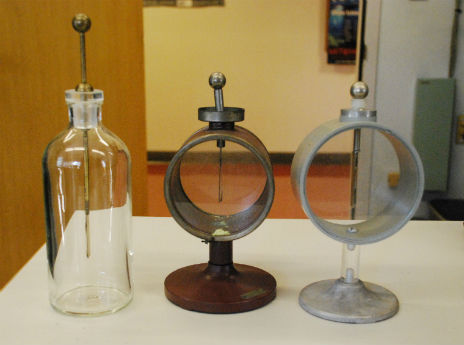
These are great for demonstrating basic electrostatics. The nub sticking out the top is connected to the stuff in the middle. The stuff in the middle comprises of the continuation of the solid conducting rod and a strip of foil. Normally, they sit in contact, but if they are given a charge they will repel. An electroscope can be charged using glass or rubber rods rubbed with silk or wool. The equipment required for a set of experiments involving an electroscope:

When the glass rod is rubbed with silk, the silk strips electrons from the rod, leaving it a positive charge. When the hard rubber rod is rubbed with wool, it gains electrons from the wool, gaining a negative charge.
This is actually one of the most fail-safe electrostatics experiments I have ever seen. The photos included on this page were taken on a hot, humid day (which usually spells death for electrostatic experiments). If your results seem rather weak and unimpressive, rub the rods more vigorously and for more time and it should work.
Let's do some science now. Class, meet electroscope:

The foil is on the left side of the conducting rod. There is no net charge on this electroscope. This is a content, but boring, electroscope. Let's mix things up a little. We rub our rubber rod, making it negative, bring it close, and...

The foil is moving! It's magic! The foil is moving because the foil and the conducting rod next to it are both negatively charged. How do I know this? I'm smart, that's why.
When the negatively-charged rod is brought close to the electroscope, positive charges are attracted to it and negative charges are repelled away from it. Since protons do not move (they comprise the structure of all things), the negatively-charged electrons are the only charged particles within the electroscope that can move in response to this charged rod. As the rubber rod is brought near, electrons are pushed down into the electroscope, negatively charging the conducting rod and foil, leaving the top part positively charged. Note that the net charge of the electroscope is still zero. If I take the rod away at this point:

If, now, we bring the negatively-charged rubber rod in contact with the top part of the electroscope so that charge may transfer between the electroscope and the rubber rod, this will not be the case.
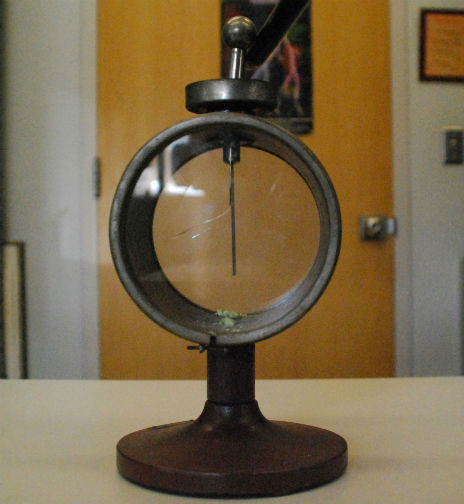
The electroscope has a net neutral charge and the rubber rod has a net negative charge. If they are brought into contact, they will both take a net negative charge. Take away the rubber rod and the electroscope is left with a negative charge.

Bring back the negatively-charged rod and even more electrons get shoved down into the electroscope.
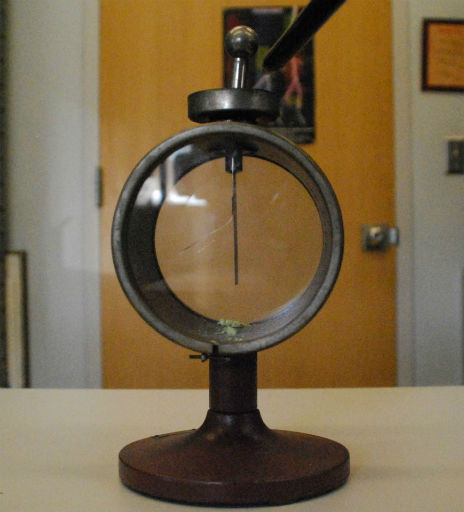
Charge up a glass rod with silk (giving it a positive charge) and bring it close and the surplus of electrons concentrates more heavily toward the top, neutralizing the lower part a bit.

And of course I can ground the electroscope simply by touching it and stealing all those excess electrons.
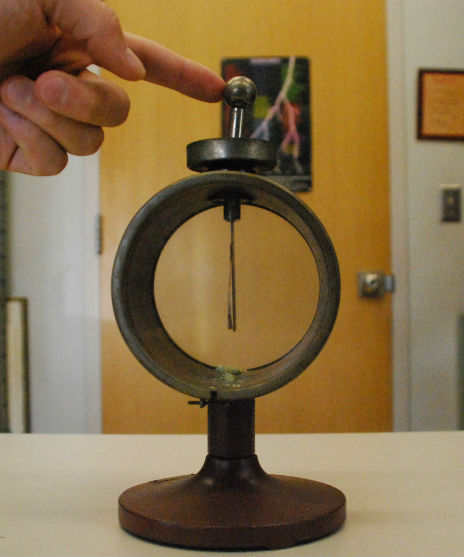
Now the electroscope is neutral again. There is no net charge to it.
So we have charged the electroscope by contact, but now let's try something that seems a bit more like witchcraft at first. Let us charge the electroscope by induction. To start, let's charge the rubber rod again and bring it close but this time my finger will stay on the electroscope to keep it grounded.

No charge is shown, which is understandable because the electroscope is grounded. I will hold off on the description of the physics for a couple pictures to make it more dramatic. For now, let's just go through the procedure. I take my finger away so that it is no longer grounded, and...
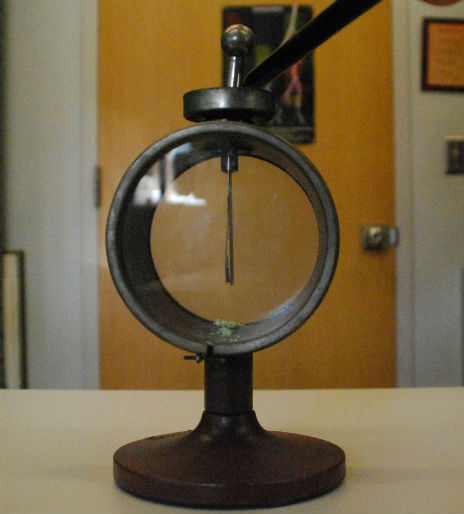
...nothing. Even with the negatively-charged rod next to it, we still don't see any charge down below. What might that mean about the net charge on the electroscope? Let's hurry onto the next step before you get ahead of me and correctly answer that: let's take the rubber rod away.
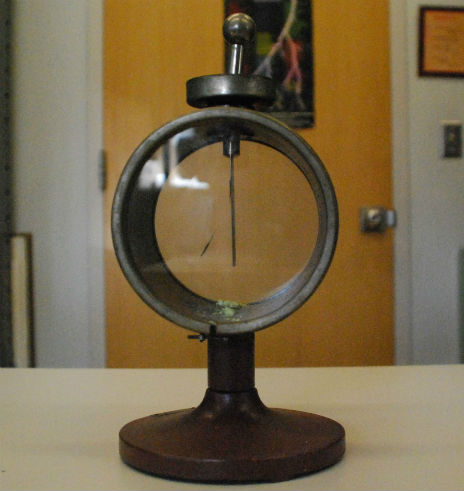
It is charged now! Excellent. So, obviously, since we used the negatively-charged rod to charge it, the foil should go even higher if we bring it close again, just like we saw in the previous exercise of charging by contact, right?
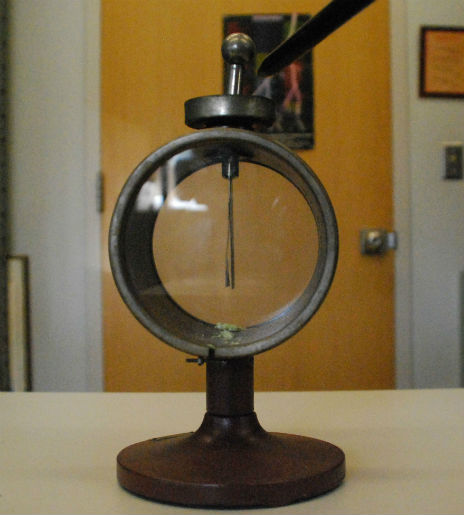
Wrong. The first hint should have been two pictures ago, which looks eerily similar. NOW I'll reveal the physics of charging by induction. When I grounded the electroscope, I gave the electrons another escape path instead of going down along the conducting rod. The human body is a huge charge reservoir compared to the electroscope, so the mobile electrons will all choose to go into my finger instead of down the conducting rod and foil. Thus, when the negatively-charged rod is brought close, the electroscope gains a positive net charge as some of its electrons have escaped into my finger. The top part, which is nearest to the negatively-charged rod is charged, but the lower part of the electroscope remains neutral. When the rubber rod is removed, the charges within the electroscope spread themselves out a little, and thus the entire electroscope takes on a positive charge.
To confirm this, we bring the positively-charged glass rod close to see that the foil does in fact gain a stronger positive charge.
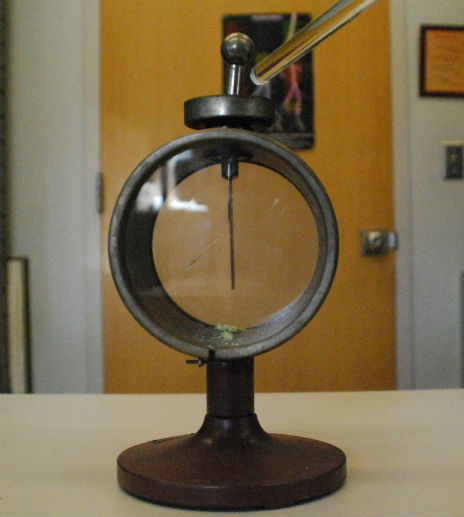
The last thing left to do is to ground the electroscope. This time, let's do it with fire, because everything is more fun and interesting with fire*!

Fire ionizes the air around it, separating positive and negative charges. If this ionized cloud is brought near something charged, it will help neutralize it. In this case, the free electrons are attracted to the positively-charged electroscope. They meet up, hit it off, and live happily ever after.
*Our colleagues in the Chemistry department have repeatedly informed me that they do not share this opinion. This is why physics is and always will be superior.